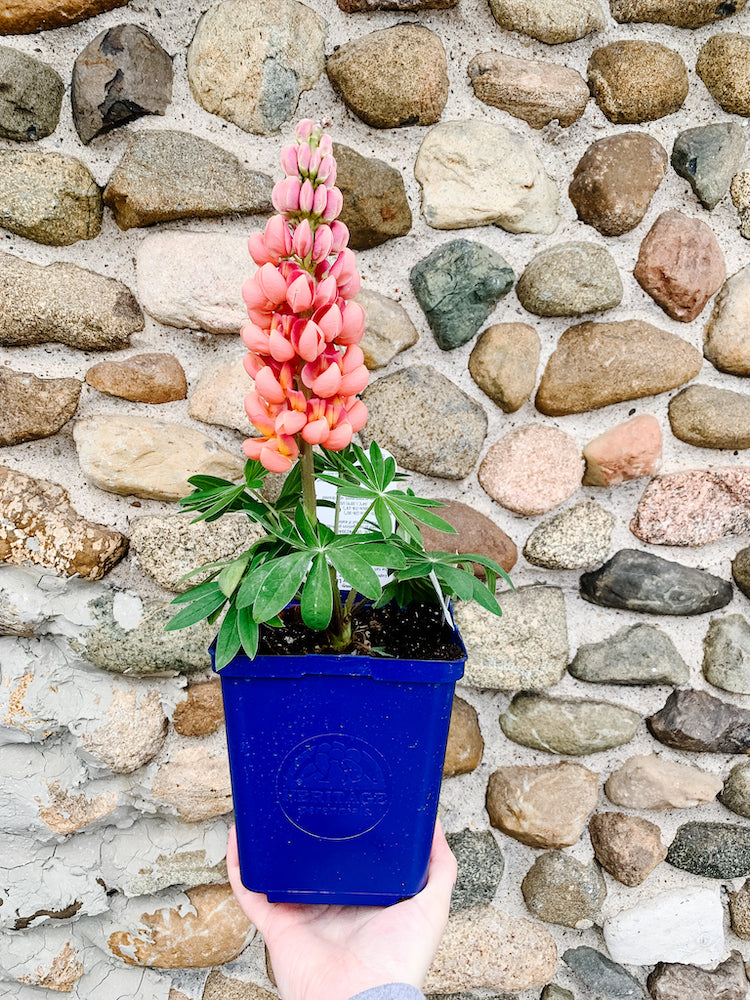
Growing and tending to a garden quite simply nurtures our souls. It gives us a place of reprieve, maybe to get our mind lost in nature’s soil or rather to sit and soak up the tranquility, clearing our heads and grounding our hearts. A garden is a landing ground to relax and grow spiritually as well as horticulturally. Our chosen plants that make up our garden story always have lessons to teach us and we believe they come into our lives for good reason, we simply have to slow down to learn from them!
This week we want you to meet a garden queen sweet Lupine, a perennial that stands tall with outstanding colour from spires of densely packed flowers in a multitude of hues! With dark grey-green foliage that adds the perfect amount of texture and palm-like shape, even the pollinators will be flocking this beauty!


Native to North America and considered a wildflower in some states, this fast-growing perennial can also be found as an annual and is a member of the pea family. Like peas, Lupine is capable of fixing nitrogen in the soil over time, meaning it improves the soil’s fertility.
Best planted in spring you will want to ensure that you choose a sunny location with well-draining soil. Lupine makes for a wonderful border plant, incorporate stakes or grow grides to avoid them from flopping over. When grown in its preferred conditions, your plant will require very little care.


Lupine Care & Maintenance:
Light: Full sun (at least 6 hours of direct sunlight). Lupine can grow in part shade, but flowering will be lessened.
Soil: organically rich soil with sharp drainage. They prefer neutral to slightly acidic soil, though they also can grow in very acidic soil conditions.
Water: Lupine prefer regular waterings, water at least weekly if your area has experienced a dry spell to prevent the soil from drying out.
Temperature: Lupines prefer fairly cool summers. If your area is experiencing an extra hot summer, a light layer of mulch around the plant can help to retain soil moisture and keep the roots cool.
Fertilizer: Lupines generally don’t require fertilizer, as it will encourage foliage and lessen blooms.
Toxicity: Toxic to humans and animals
Blooms: Spring & summer
Flower Color: White, pink, red, yellow, blue, purple, bicolor
Growth: 3–4′ tall/ 1–1.5′ wide
Maintenance: Deadhead your plants (remove spent flowers) to encourage additional blooming.








